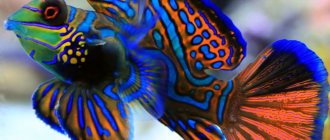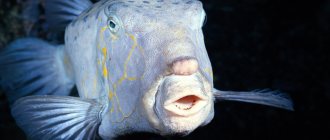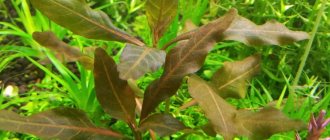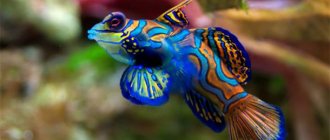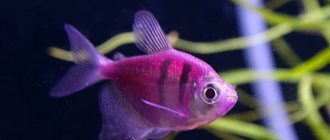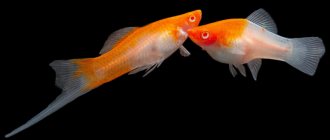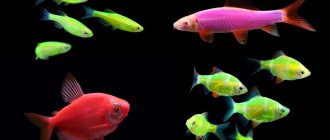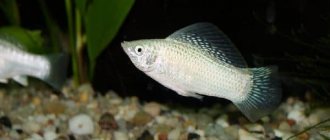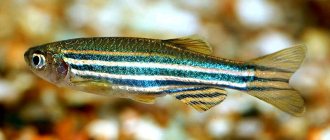The decision of which fish to get first in your aquarium can be sudden, or it can be deliberate. Unfortunately, novice aquarists are often guided by the first impulse, without understanding fish at all.
And then, instead of joy and pleasure, they get headaches and problems. You need to choose fish wisely, because their life and your comfort depend on your choice. Before you go to the store or market, study all the available information about the fish you like.
We looked at what fish beginners should not buy here. And the top 10 unusual fish are here.
And to make it easier for you to navigate, we have compiled a list of unpretentious aquarium fish for beginners and briefly described them. All of them are distinguished by their unpretentiousness, tolerance to conditions in the aquarium, peaceful nature, easy-going nature and modest size. We hope it will help make your choice easier!
Guppies and Endler's guppies
A classic for any beginner in aquarium keeping - guppies. They are very unpretentious, easy-going, and easy to get along with.
It is very easy to distinguish males from females; males have a large tail, they are much brighter, and their anal fin is elongated. Females are larger, fuller and have a shorter anal fin, and most importantly, they are gray, only the caudal fin is colored.
They are viviparous, which means the fry immediately swim and are adapted to life. At one time, a female guppy can spawn from 10 to 60 fry. But if you leave the fry in a common aquarium, they will quickly eat it; you need to catch the fry in a separate container.
Breeding them is very simple, just keep males and females together.
Guppies eat all types of food and can grow well on branded food - flakes, granules, etc.
It is worth noting that beginners are not recommended to have purebred forms of guppies; due to the long mixing of blood, they, on the contrary, have become capricious and difficult to maintain.
There is also a species of Endler guppies. The differences between Endlers are that they themselves are much smaller, the males are not veiled, they are much more nimble, fewer fry are born at a time, but the fry themselves are larger and they breed more often.
How to breed viviparous fish
Viviparous animals can reproduce by fertilizing a female with a male. The males mate with the female, she carries the seed for a while, and then produces fry, which become adults. Viviparous animals have no parental instinct. They can immediately eat the fry after birth, so after the fry hatch, the adults are placed in a separate tank.
During fertilization, the male releases seed into the female in special packets, which dissolve inside the female after 15 minutes. After fertilization of all eggs, there may be unclaimed sperm left, which the female can use at any time in her life and reproduce new offspring. This mechanism increases the chances of survival of fish in natural conditions.
Pet stores sell special chambers for breeding viviparous animals. The camera is placed in the aquarium. It consists of two compartments: upper and lower. The fertilized female is placed in the upper aquarium and the fry are waited for to appear. After hatching, the fry enter through small holes at the bottom of the upper compartment into the lower compartment of the chamber, where they grow quietly. The female is released into a common tank, and the fry are moved to a separate aquarium.
In order for viviparous fish to reproduce, you need to find a female and a male and place them in a prepared tank. Viviparous males differ from females in their large size and bright coloring. In some breeds, differences between female and male appear only during the spawning period.
But the system of placing the female and male in a separate tank does not work with all livebearers. Some representatives need to choose their own spawning partner, and they may simply not like the partner you choose. Discus fish are livebearers that breed with only one partner in life, so they cannot be separated.
Swordtails/mollies/platies/
Let's combine them into one group (swordtails/mollies/platies/), since they are very similar in behavior and content, although they are very different in appearance. Just like guppies, they are viviparous. This means there will be no problems with the fry, it immediately swims, eats, and hides.
They are very easy to breed, the principle is the same as for guppies - just keep males and females together. They are very bright and active fish, you will not need to look for them to look at them, on the contrary, they will always beg you for food.
They tolerate different conditions in the aquarium and forgive mistakes that beginners often make.
They eat all types of live, artificial, frozen food. In general, they are similar to guppies in content, but they are larger in appearance and have a variety of colors and body shapes. As a word of caution - do not buy many male swordtails in one aquarium, they can fight!
Diseases of aquarium fish
As in the animal world, in the world of aquarium inhabitants there are hundreds, if not thousands, of types of diseases and even more reasons for their occurrence. But the main and main reason for almost any disease of aquarium fish is only one - unsuitable or even simply poor living conditions.
Such global reasons affecting fish health include:
- neglect of the aquarium (stagnant or polluted water and a lot of organic waste);
- unsuitable composition of water for fish, its poor quality, imbalance;
- improper arrangement of the aquarium (bright lighting, low temperature, overcrowding);
- failure to take into account the characteristics of various fish species - mainly their behavior;
- unsuitable food or incorrectly formulated diet, overfeeding;
- improper compliance with quarantine rules and regulations for new fish (from three to eight weeks).
All these external factors contribute to the negative manifestation of the well-being of aquarium fish, which leads, first of all, to a decrease in the level of their immunity. As a consequence, in this case, the risk of infection of the inhabitants of the aquarium with a variety of bacteria and pathogenic microorganisms increases.
Columnaria is a fish disease
Fish diseases are usually divided into several types:
- contagious – caused by a fungus or infection;
- not contagious - they are mainly caused by unfavorable environmental conditions.
In general, several more forms of diseases of aquarium inhabitants can be distinguished depending on the type of manifestation: these can be diseases that manifest themselves by external signs (such manifestations can be treated without problems if detected in a timely manner), and internal diseases that are very difficult to diagnose. As a rule, in this case, you need to pay attention to the behavior of the pets (loss of appetite, change in color or a sudden change in movement technique).
Naturally, to combat fish diseases and successfully treat them, a variety of medications are usually used - everything is the same as in humans. But in order to accurately determine which medications, in what doses and in what order you may need the help of a specialist, it is best to contact a special clinic. Of course, you can diagnose it yourself, but you need to understand that it will be quite difficult for a novice aquarist to do this - after all, many diseases have very similar symptoms.
Danio rerio
Danio rerio is a small (up to 5-6 cm), graceful fish. Due to its small size, peaceful disposition and unpretentiousness, it has earned great popularity in the aquarium hobby.
Since this is a schooling fish, it is better to keep at least 5-6 individuals. The aquarium can be planted with plants, but it is important that the zebrafish have free space to swim near the surface, as it is a very active fish.
If you are going to get a veil form, do not plant them with fish that can break off their fins, for example, the Sumatran barb. The aquarium must be closed as the danios may jump out of the water.
Omnivores, they eat any type of food - artificial, live, frozen. It is better to feed them flakes, as they pick up food from the surface of the water and happily collect flakes that do not sink for a long time. Breeding zebrafish is very easy; the female lays from 200 to 500 eggs at a time.
Aquariums for bettas
Since bettas are bully fish, it will be uncomfortable for them to chase each other in a round aquarium. Buy a rectangular aquarium with a lid and a built-in lamp. What is the size? From five to 10 liters per rooster. You can create an artificial background for the bettas by gluing film to the back of the wall. The soil is dark, 3 cm thick, natural, large, so that the fish can hide in it.
Plants in the ground are also natural: cryptocarinae or arrowhead with dwarf vallisneria. The bottom decor is a driftwood on which you plant Java moss. Send salvinia or pistia to the surface of the water. The cockerels like it. When the surface of the water is covered with living plants. In addition, bettas like water slightly colored: use a little almond leaf to make it brown.
Cardinals
This is a very small (2.5-3 cm) and very unpretentious fish. At the same time, it is brightly colored, easy to breed and completely non-aggressive; cardinals do not even touch their fry.
They tolerate cold water well, some even keep them in a pond in the yard in the summer. They like to move in the middle layers, and also like to gather in flocks. You need to keep them in small flocks, from 6 pieces. Although they can be large, given their modest size, cardinals do not require large aquariums. With good maintenance they can live up to 3 years.
Corridors
These are small, agile, beautiful and schooling catfish. There are many different species of corydoras, but the most popular are the speckled catfish and the golden catfish.
They are all similar in their behavior - living on the bottom, they are constantly looking for leftover food, thereby cleaning the aquarium. They are very mobile, while remaining quite small, and tolerate a wide range of conditions.
Any type of food is suitable for feeding, but it is important to ensure that the food falls to the bottom, and the catfish do not remain hungry while other fish fill their bellies.
It is best to feed corydoras with special food for catfish; they sink quickly, and when they fall to the bottom they do not fall into pieces. It is better to keep Corydoras in a flock; they love to live surrounded by relatives, and it is very interesting to watch them in a flock.
Diseases and prevention
Most aquarium fish have strong immunity. The main causes of diseases in aquarium fish are:
- deterioration of water quality;
- infection;
- severe contamination and an increase in the number of pathological bacteria.
If, when examining fish, you see passive fish lying on the bottom, moving strangely, with strange spots or plaque on the body or fins, look for the reason. If necessary, accommodate separately.
The most popular diseases are discussed in more detail here
Wedge-spotted rasboras
A very beautiful and very small fish, which is a perfect companion for all of the above fish. They grow up to 5 cm and are very peaceful.
Its beautiful coloration with a black spot (for which it got its name), small size and peaceful disposition have made it very popular.
It is better to keep cuneiform rasboras in a school, and there should be enough free space in the aquarium for swimming.
A flock of rasboras stay together and are a great addition to any aquarium. You can feed her with a variety of foods, but it’s important not to give her large ones, as she simply won’t be able to swallow them.
Lack of offspring
Adults may not spawn at all. This often happens in home aquariums where the environment does not match the recommended habitat. Some fish lay eggs, but the males do not fertilize them. It remains completely empty. The reasons for empty eggs lie in the age of the male. He may be too old, so he cannot cope with the fertilization of eggs. To breed fish, you need to buy sexually mature young representatives of the breed.
Breeding fish is a complex process that requires maximum attention, patience, and experience. The first experience of breeding fish in an aquarium may be unsuccessful, but failure is the key to subsequent success. General recommendations will help make fish breeding more successful, avoid complete failure and get offspring at home. Consider all factors, follow the recommendations, and remember possible problems when breeding aquarium fish.
Acantophthalmus
This is one of the most unusual fish that even an inexperienced aquarist can spot.
Belonging to the loaches, it somewhat resembles a small snake. But at the same time it is completely harmless and quite hardy. Acantophthalmus often hides during the day, and in order for it to feel comfortable, it needs shelter and soft soil in which it likes to dig.
In soft soil, he is able to find and dig up buried bloodworms, not to mention other food.
If there is sand in the aquarium, he will happily bury himself in it. This means it helps keep the aquarium clean by eating everything that falls to the bottom. You can feed it with any sinking food, but additionally add catfish food, preferably at night.
It can escape from the aquarium, it needs to be covered. Readers said that it can dig up stones in the sand, but I’ve never encountered anything like this, mine definitely didn’t dig up anything.
Cockerels or marbled gourami
The fish belong to the same genus - labyrinth fish. These fish live in oxygen-poor water and have adapted to this by learning to breathe oxygen from the surface. You will see how they rise to it to take another breath of air.
Small, peaceful, males are very brightly colored, and their pelvic fins have turned into long processes. You can feed any food, including floating food. Only give bloodworms with caution and in small quantities; cockerels do not digest it well.
In general, the betta is one of the most popular and unpretentious aquarium fish. He is beautiful, he does not need a lot of space to keep him, he eats little. But there are also disadvantages; it’s not for nothing that bettas are called fighting fish. Two males in an aquarium will result in one killing the other.
I agree, and will add that there is another wonderful fish from the same genus - gourami. There are many types, but for beginners a good choice is the marbled gourami. Very hardy, peaceful, unusual shape and color.
It is generally similar to a cockerel, but larger and less demanding. So you can stop at this magnificent fish, and get a betta a little later.
Treatment of aquarium fish
Before carrying out any treatment or administering any medicine, you must clearly make sure that the disease has been diagnosed correctly, and the cause of the fish’s illness has been correctly identified. Most often, the cause of the disease can be elementary stress associated with transportation or changes in water quality. In this case, it is necessary to test the water and take all measures to improve its performance.
And before adding the medicinal drug, it is advisable to remove any activated carbon from the filter - otherwise the medicine simply will not work. And don't forget to read the instructions for the drug!
Having determined the cause and eliminated all the obvious problems with the disease (water quality or new inhabitants), it is necessary to determine what the fish is sick with, observing the expressed symptoms, and then carry out treatment.
You need to understand that the inhabitants of an aquarium do not get sick just like that - and the main negative impetus for this is almost always inappropriate living conditions. And it is best to start any treatment with finding the root cause of the problem - and eliminating it. And then a decision is made on the correct treatment mechanism.
Cherry barb
A peaceful, small fish, the males of which are very brightly colored, for which they got their name. This is a schooling fish, so it is better to keep at least 5 cherry barbs.
But you will notice that he does not stay tightly, gathering in a flock only when frightened. The cherry barb is small in size, the color of the males is bright red and very noticeable, and the maintenance requirements are low. This is a good fish to include on our list.
Compatibility with other fish
When selecting neighbors, consider the compatibility of the fish. They can be compatible, partially compatible (goldfish and catfish converge differently) and completely incompatible (predators and peaceful ones, large and small). The following compatibility criteria are distinguished:
- family;
- size;
- accommodations.
Select fish of a similar size with similar requirements for temperature, acidity, water hardness, composition and nutritional standards.
Other inhabitants
Snails, shrimp, crayfish or aquarium frogs are added to the neighborhood of aquarium fish. Snails crawl along the bottom, decorations and clean their habitat from food waste and mucus.
Small fish, such as guppies and neons, are compatible with shrimp. The others try to eat them.
Only small and nimble fish that can swim away from its claws, such as guppies, get along with crayfish. Bright, large species attract crayfish, crawling along the bottom too. He hunts them.
Dwarf, artificially bred frogs are also sometimes added to fish. But they have high requirements for acidity and water hardness. It is better for a beginner not to start them.
Ancistrus
This is perhaps the largest fish on the list; it grows about 15 cm, if the aquarium allows. But it has earned its popularity for its unusual appearance, for the fact that it cleans the aquarium and for its endurance. Ancistrus is a catfish, but it is an unusual catfish; in nature it lives by eating algae and fouling.
And his mouth turned into a suction cup, with which he scrapes it all off. In the aquarium, he is a cleaner of walls and decor.
Males have unusual growths on their heads that make them very distinctive. Peaceful, but can get into fights with other males. Vegetable nutrition is important for him; he needs to be fed with special tablets.
Adviсe
- Understand the issue. A little time to study and you more or less understand what you need. This means you won’t get disappointment instead of joy.
- Do not take many fish or different species at once. Different sizes, behavior and volume requirements will immediately create compote in your aquarium. The most common sight at pet markets is a child with a bag in which incompatible fish are swimming. Will such a package bring a lot of joy to a child?
- Don't trust sellers. They need to sell. Not that they are such cynics, but when you sell fish, there is not much choice. Kids are good clients. So are the green novices.
- It's better to take one type of fish to start with.
- And it’s better if they are viviparous. They definitely won’t die in a week (unless you try really hard), they are bright, alive and even breed on their own.
- Take the first fish - guppies. Seriously. Yes, they are not cool, but they... (described above).
- Don't take goldfish. Seriously. They are unpretentious and quite hardy, but they eat a lot, shit just as much and need spacious aquariums. And they don't grow small.
- Don’t immediately buy everything you think you need for your aquarium. The list could be endless, but off the top of my head: light, filter, net, water conditioners, plastic plants, live plants, food, glass scraper, plastic shipwreck or worse, skull, bright soil.
- But what you really need from all this is: a net, food, a filter. Most fish don’t care about plants, soil, or light. They live well without them.
- Prepare the water. Ideally, buy a water conditioner and fill it up; it’s not expensive and will last a long time. You do not want? Just let it heat up and settle.
- Do not release the fish immediately. Place the bag in the water and let it float. Open it and add a little water from the aquarium. Repeat after a while.
- There are two guaranteed quick ways to kill your fish: underfeeding and overfeeding. If everything is clear with the first, then the second seems not obvious. Advice: take food away from grandparents and children. They feel sorry for the fish, the fish are asking for food. Fishes are stupid, unfortunately, and ask constantly. Only the food is not eaten, it rots, and the rotting products kill the fish themselves.
- Feed the fish yourself. Twice a day. Why two? And the fish are always full and the food does not go to waste and the portion is moderate.
- Change the water. Once a week. Yes, once, yes every time. 20-25% will be fine. Yes, even in a 5 liter aquarium. Try closing the windows, not flushing the toilet, and live like this for a month. Fish feel about the same way.
- Make beautiful designs. Keep difficult fish. Separate them. Enjoy your hobby, your life. Make your life interesting.
Aggressive large fish
Discus
Discus
Discus
Discus
Discus
Discus
Discus
Very temperamental fish, there are many types and colors. They got their name because of their shape, which resembles a flat disk.
Adults of these flat, bright fish grow up to 15-20 cm, males are larger than females. Fish are very thermophilic , the water should be 28-35°C. Space is important to them, so expect that one individual needs 40 liters in the aquarium. Live food can become a source of disease , so choose dry and plant-based food, monitor the diet and vitamin levels for these pets. If the discus is stressed or not feeling well, its color will fade.
Adult fish are fed 3 times a day, and fry 6-7.
It is best to keep discus fish in a school of their own species, separate from other fish. Firstly, few fish will prefer such a high temperature, and secondly, discus fish are not very friendly.
Experienced aquarists advise diluting discus with a flock of neons; such a multi-colored ensemble will look very impressive.
Astronotus
Astronotus
Astronotus
Astronotus
Astronotus
Astronotus
Astronotus
It can become your aquarium giant because it reaches 30 cm.
What is impressive about this fish is not only its size and color, but also the fact that it has intelligence and character. Such a fish will recognize you, follow your actions and feed from your hands. But astronotus is not a gentle pet, but a predatory fish. A 50 liter jar is not suitable for him, they prefer 200 liter aquariums, they are expensive to feed and difficult to find neighbors.
Big fish eat a lot, so artificial animal feed will be expensive, you will need to work hard preparing food for them yourself. They readily eat small guppies and veiltails. Temperature range 22-26°C.
To keep astronotus together with parrots and chain catfish, you need a very large aquarium, there should be no decorations or plants in it, and the possibility cannot be ruled out that a large individual of astronotus will eat its neighbor.

